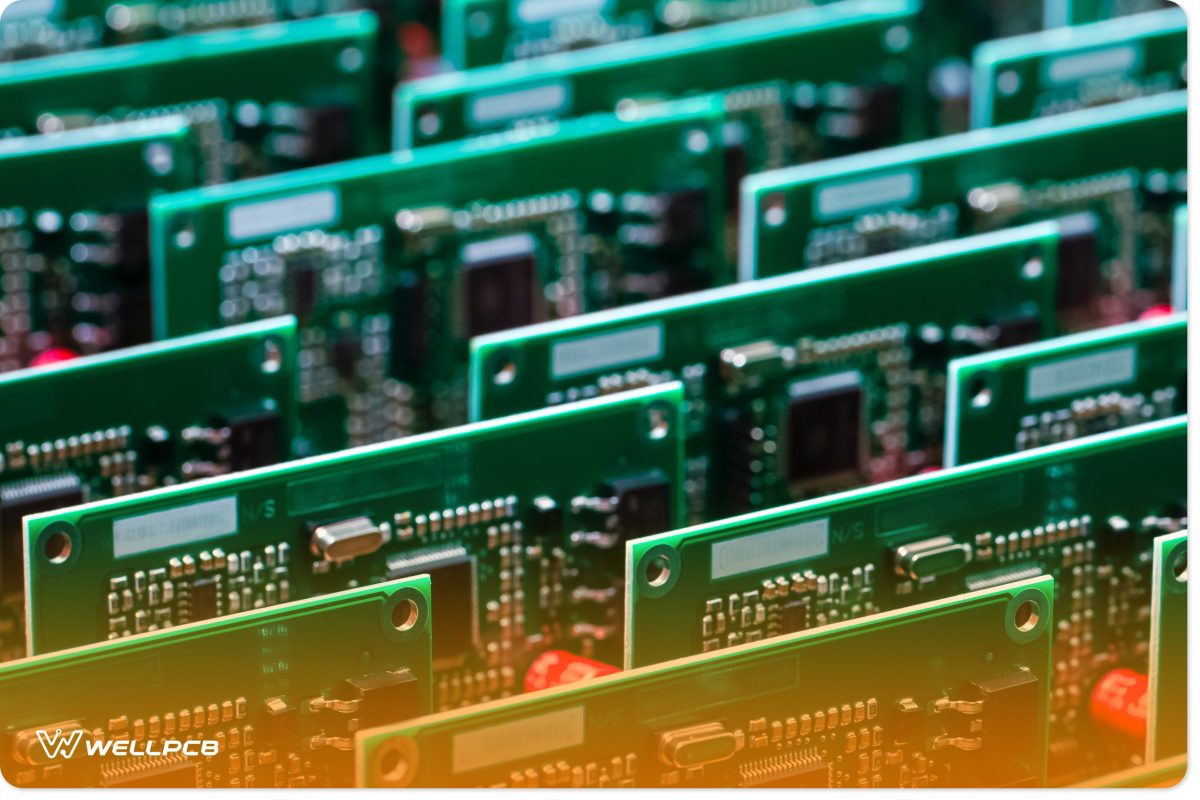Contents
What is PCB?
A printed circuit board (PCB) is a board consisting of an electronically inert base material that hosts electrical pathways connecting various components.
PCBs serve as the foundation for countless electrical devices, used in applications from household consumer electronics to industrial machinery. Each PCB hosts essential electrical components like resistors, capacitors, diodes, and integrated circuits, all connected by coated copper, gold, or tin pathways that enable electronic functionality.
If you’re curious about PCB production costs and how they impact the design and functionality of your projects, understanding the cost factors involved can help you make the best production choices.
What is Motherboard?
A motherboard is a printed circuit board(PCB) specifically made to be a controlling unit in a computer or other electrical systems.
The motherboard is a computer’s baseboard that holds connections for I/O devices and vital parts of the computer, such as the CPU, GPU, RAM, and storage.
It is also the backbone of communication connections between data buses, power distributors, and electrical circuits.
PCB vs. Motherboard Comparison
To understand the main difference between motherboards and PCBs, remember, all motherboards are PCBs. Yet, not all PCBs are motherboards.
Motherboard PCB Functionality
A PCB in an electrical device can control a particular area of the device. It is common to find multiple PCBs for one device, yet in control of different electrical processes and outputs.
Unlike a PCB, the motherboard is one singular unit from which all communications flow in an electrical device. A device can only have one motherboard, without which it would not work.
Motherboard PCB Components

PCB showing vital components
Looking at a PCB, you’ll find these soldered components.
- Resistors
- Capacitors
- ICs(Integrated circuits)
- Diodes
- Inductors
- Transformers
- Sensors
These components usually have active connections through traces, through holes, and vias. You’ll also find elements such as copper, plated gold, tin, and other metals laid in routes to conduct electrical current.
A PCB also has coatings that protect the layers and conductive material.
On the other hand, a motherboard is an electronic device’s communication hub. Every connection on the device runs from the motherboard. These components are found in a computer.
- Input/output connectors
- Central processing unit(CPU)
- Storage units(HDD/SSD)
- Memory slots
- CMOS
- BIOS
- Fans
- PCI slots
A glaring difference in the PCB vs Motherboard components comparison is that PCBs don’t have a direct connection to the power unit unit. However, a motherboard hosts a direct connector to the power supply.
PCB Motherboard Design
By design, PCBs often have a bunch of different designs. They are custom-made to fit sections of a unit. Therefore, it is common for PCBs to be highly customizable.
A simple PCB for a prototype project might have one layer. PCBs meant for complex applications may have multiple layers that have electrical connections through vias.
The Motherboard, unlike the PCB, has a specific design suited for each device.
You can fit a replacement component onto a motherboard as long as it matches the specifics of the device.
The design aspect also influences size.
Since you can have multiple PCBs in one unit, they are typically smaller. However, a manufacturer can still request bigger PCBs for their project.
Conversely, motherboards are bigger and standardized. The standardization makes it compatible with similar machines.
PCB Motherboard Price
PCB production costs substantially less if you’re working with affordable materials.
Manufacturers use materials such as FR4 for simple PCBs. However, some materials, such as Teflon, could hike production costs.
Also, manufacturers often produce small units. This factor keeps costs down.
Motherboards fit specific designs and specific products. Also, they are highly specialized. Therefore, the price difference between PCBs and motherboards is wide.
Control Board Vs. Circuit Board
There’s usually some confusion about control boards and whether they are related or similar to circuit boards.
In a way, they’re part of the same system. You’ll find the control board on the integrated circuit. It is essentially a task manager on a functional PCB.
A circuit board, however, is the entire baseboard that controls the electronic components on the board.
PCB vs Motherboard FAQ
Is the PCB the same as the motherboard?
PCBs and motherboards are not the same. They don’t even operate the same.
A motherboard is a unique board that enables communications between vital components of a computer. It fits specific form factors and specific machines.
A PCB is the starting point of an electrical unit, hosting electrical components. Its main job is to provide electrical connections between electrical components.
What is the difference between PCB and board?
In some cases, a board could mean a breadboard. In this context, a breadboard is mainly a prototyping tool. Here’s the confusing bit.
You can use a PCB for prototyping too. However, a board(breadboard) is only a temporary solution meant for experimental design before designing a semi-functional circuit board(PCB).
A board could also be a motherboard. It differs from a PCB in customization limitations, components, and power connection.
Are PCBs also known as the motherboards?
If you referred to a motherboard as a PCB, you wouldn’t be wrong.
Technically, it is. PCBs, though, are not known as motherboards. Think of a motherboard as the main PCB in a computer.
Conclusion
Computing and electronics are closely related. Motherboards are a key feature in computing, while PCBs are inseparable from electronics.
Although the similarities are visible between both, they are different concepts.





